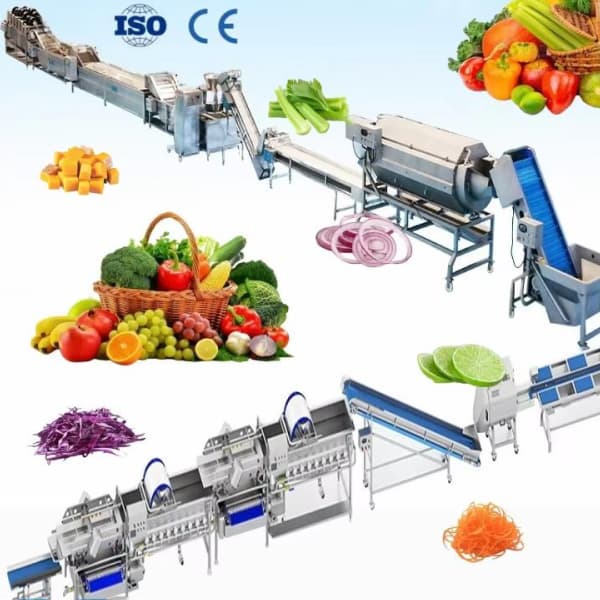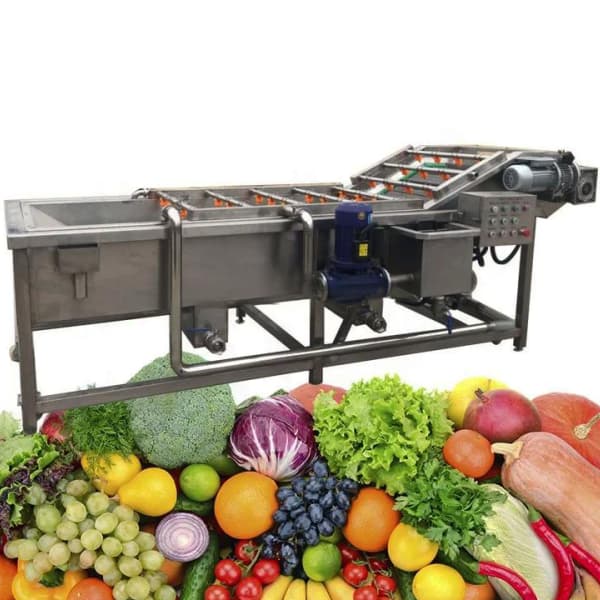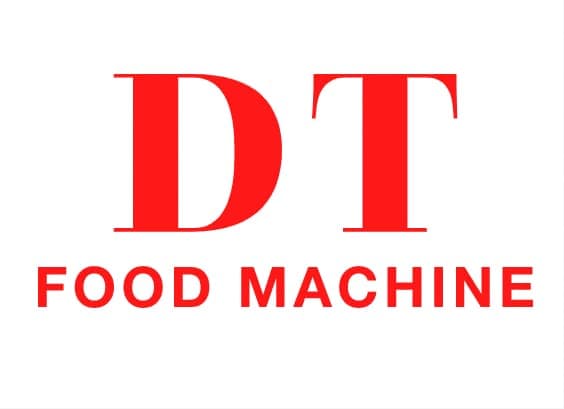1. Introduction to Vegetable and Fruit Processing
Vegetable and fruit processing is one of the most vital sectors in the global food industry. It transforms fresh produce into value-added products such as juices, purees, frozen vegetables, dried fruits, sauces, and canned goods. This process not only extends the shelf life of perishable products but also maintains their nutritional quality and taste.
With the increasing demand for ready-to-eat and healthy foods, the vegetable and fruit processing industry has witnessed rapid technological advancement. From small-scale fruit washing machines to fully automated vegetable processing lines, manufacturers and investors are recognizing the immense potential of this sector.
2. What is Vegetable and Fruit Processing?
In simple terms, vegetable and fruit processing refers to the methods used to prepare fruits and vegetables for consumption, storage, or further manufacturing. It involves multiple steps such as washing, peeling, cutting, blanching, drying, freezing, juicing, and packaging.
These processes ensure that the products are safe, hygienic, and suitable for both domestic consumption and export markets. The goal is to preserve the flavor, color, and nutrients of the raw materials while minimizing waste.

3. Importance of Vegetable and Fruit Processing
The importance of vegetable and fruit processing cannot be overstated. Here are several key reasons why it plays a crucial role in the global food supply chain:
- Preservation of Fresh Produce: Extends the life of fruits and vegetables that would otherwise spoil quickly.
- Value Addition: Converts low-value raw materials into high-value products like jams, sauces, or juices.
- Nutritional Retention: Modern processing lines are designed to retain vitamins, fiber, and antioxidants.
- Food Safety: Helps in removing contaminants and pathogens through washing and sterilization.
- Convenience: Meets the growing demand for easy-to-use products like pre-cut vegetables and ready-to-cook mixes.
4. Key Steps in the Vegetable and Fruit Processing Line
4.1. Sorting and Grading
The first step in the processing chain is sorting and grading. Fresh fruits and vegetables are classified based on size, ripeness, and quality. Automated sorting systems with optical sensors can detect color and shape defects, ensuring uniformity and consistency.
4.2. Washing and Cleaning
Next, the produce is cleaned using vegetable and fruit washing machines. These machines remove dirt, pesticides, and bacteria through water spray or bubble washing systems. High-efficiency washers are essential to maintain hygiene and product safety.
4.3. Peeling and Cutting
Depending on the end product, fruits and vegetables undergo peeling and cutting. For example, a vegetable cutting machine can slice, dice, or shred vegetables into precise shapes for salads or frozen mixes.
4.4. Blanching and Pre-Cooking
This step involves briefly heating vegetables to deactivate enzymes and preserve color and texture. Blanching also prepares them for freezing or canning.
4.5. Drying and Dehydration
In vegetable and fruit drying systems, water is removed to extend shelf life and reduce weight for transport. This is common for dried fruits, chips, and instant soup ingredients.
4.6. Juicing and Pureeing
For products like fruit juice, smoothies, or tomato paste, specialized fruit juicing and pulping machines are used. These machines extract juice efficiently while maintaining flavor and nutritional content.
4.7. Packaging
Finally, processed products are packed using automatic packaging machines. Packaging materials may include glass jars, plastic bottles, or vacuum-sealed bags depending on the product type.

5. Types of Vegetable and Fruit Processing Equipment
Modern vegetable and fruit processing plants rely on advanced machinery designed to maximize efficiency, safety, and quality. The main types of equipment include:
| Equipment Name | Function | Application |
|---|---|---|
| Washing Machine | Cleans fruits and vegetables using water jets or bubbles | Apples, tomatoes, leafy greens |
| Peeling Machine | Removes outer skin | Potatoes, carrots, mangoes |
| Cutting Machine | Slices or dices into uniform shapes | Onions, peppers, apples |
| Blanching Unit | Prepares vegetables for freezing/canning | Beans, broccoli |
| Drying Oven | Dehydrates produce | Banana chips, dried mango |
| Juicer / Pulper | Extracts juice or puree | Oranges, tomatoes |
| Sterilization System | Ensures food safety | All processed items |
| Packaging Machine | Seals and labels final product | Juices, canned foods |
6. Advanced Technology in Vegetable and Fruit Processing
In recent years, the industry has seen the integration of automation, artificial intelligence, and smart sensors into processing equipment. These technologies help reduce labor costs, increase productivity, and ensure consistent quality.
For example:
- Optical sorting systems can detect blemishes and remove defective pieces.
- CIP (Clean-In-Place) systems reduce downtime by cleaning machinery automatically.
- Energy-efficient dryers minimize energy use while improving drying uniformity.
- IoT-enabled monitoring systems track temperature, humidity, and production metrics in real-time.

7. Applications of Processed Fruits and Vegetables
Processed fruits and vegetables are used in a wide variety of industries, including:
- Food manufacturing: Sauces, soups, snacks, and ready meals.
- Beverage industry: Fruit juices, smoothies, and concentrates.
- Bakery and confectionery: Fruit fillings, jams, and decorations.
- Frozen food market: Frozen peas, carrots, and mixed vegetables.
- Dehydrated goods: Dried mango, banana chips, and vegetable powders.
This versatility makes vegetable and fruit processing a cornerstone of the modern food economy.
8. Setting Up a Vegetable and Fruit Processing Plant
Establishing a fruit and vegetable processing plant involves several important steps:
- Market Research: Identify demand for specific products (e.g., mango pulp, frozen vegetables).
- Raw Material Sourcing: Ensure a consistent supply of fresh produce.
- Equipment Selection: Choose machines based on production capacity and type of product.
- Facility Layout: Design an efficient plant layout with sections for washing, cutting, processing, and packaging.
- Quality Control: Implement HACCP and ISO food safety systems.
- Regulatory Compliance: Obtain certifications required by local food authorities.
9. Technical Parameters Example
Below is a sample of technical specifications for a washing and processing line:
| Model | Capacity (kg/h) | Power (kW) | Water Consumption (L/h) | Material | Dimensions (mm) |
|---|---|---|---|---|---|
| VF-1000 | 1000 | 3.5 | 500 | SUS304 Stainless Steel | 4000×1200×1300 |
| VF-2000 | 2000 | 5.0 | 800 | SUS304 Stainless Steel | 5500×1300×1400 |
| VF-3000 | 3000 | 6.5 | 1000 | SUS304 Stainless Steel | 6000×1500×1500 |
10. Benefits of Investing in Fruit and Vegetable Processing Equipment
- Higher Profit Margins: Convert raw fruits and vegetables into premium products.
- Reduced Waste: Utilize every part of the produce efficiently.
- Scalability: Easily expand from small-scale to industrial-level production.
- Compliance: Meet international food safety and export standards.
- Sustainability: Reduce spoilage and environmental impact.

11. Future Trends in Vegetable and Fruit Processing
The future of processing will be driven by innovation and sustainability. Key trends include:
- Automation and Robotics: Fully automated processing lines are becoming standard.
- Sustainable Packaging: Biodegradable and recyclable materials are replacing plastic.
- Cold Chain Expansion: Improved refrigeration systems reduce spoilage.
- Organic and Functional Foods: Demand for natural and healthy processed foods continues to grow.
- Smart Manufacturing: Data-driven optimization for yield and energy efficiency.
12.Modern vegetable and fruit processing equipment-DT Food Machine
Vegetable and fruit processing is no longer limited to traditional canning and drying methods. With the advancement of technology, the industry now embraces automation, hygiene, and precision engineering. Whether you are a food entrepreneur, investor, or manufacturer, investing in modern vegetable and fruit processing equipment can open new opportunities in both local and international markets.
By understanding the processes, machinery, and market trends, companies can produce high-quality, safe, and nutritious food products that meet global standards — ensuring long-term profitability and sustainability.
